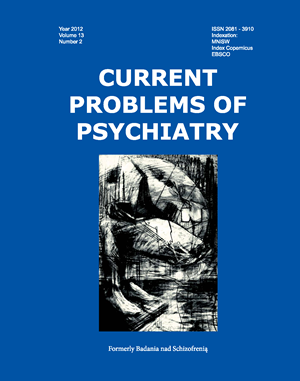Science fiction in delusions
Keywords:
delusions, science fictionAbstract
There is an approach assuming that the transition between delusions and so called “normal” thinking is not sharply differentiated. It is difficult or even according to some authors impossible to find strict criteria assessing appropriateness or inappropriateness of thinking. The most popular criterion used instead of authenticity is the rationality criterion, which is not an unequivocal term either. Delusion is not an aim that the patients want to achieve, but rather a condition for keeping optimal integration and safety. The delusional structures are the effect of complex thinking system which is always heuristic (i.e. not determined by strict rules), intuitive and discontinued. Apart from reproductive elements, delusions contain creative and intuitive elements. Psychiatrists and psychologists were trying to reconstruct the thinking process, which causes delusions, however up till now no clear explanation has been found. The important feature of several delusions is their prospective form, because the most often they concern future of the patient and the world. However, there are differences between the delusional structures and philosophical systems or common knowledge, which mainly lie in the fact that delusions are more egocentric and autistic. In the paper there are given examples of extraordinary delusions from literature and own experience.
References
1. Spitzer R.L., Endicott J., Robins E.: Research diagnostic criteria: rationale and reliability, Archives of General Psychiatry, 1978, 35,773-782.
2. Jaspers K.: General Psychopatology, 7th ed(1923), Manchester, Manchester University Press,1962.
3. Schneider K.: Clinical psychopathology, Grune and Stratton, New York- London 1959.
4. Bell V., Halligan P.W., Ellis H.D.: Explaining delusions: a cognitive perspective, TRENDS in cognitive Sciences, 2006, 10, 5, 219-226.
5. Grzywa A. Pogranicza psychiatrii. Drogi i bezdroża umysłu, Wyd. Czelej, Lublin, 2009
6. Mullins S., Spence S.A.: Re-examining thought insertion, Brit. J. Psychiat., 2003, 182, 293-298.


